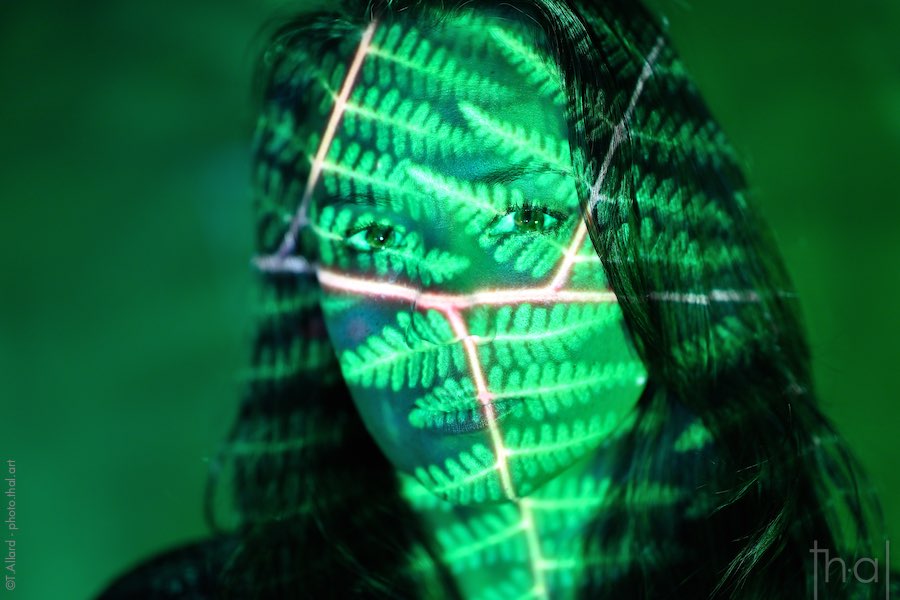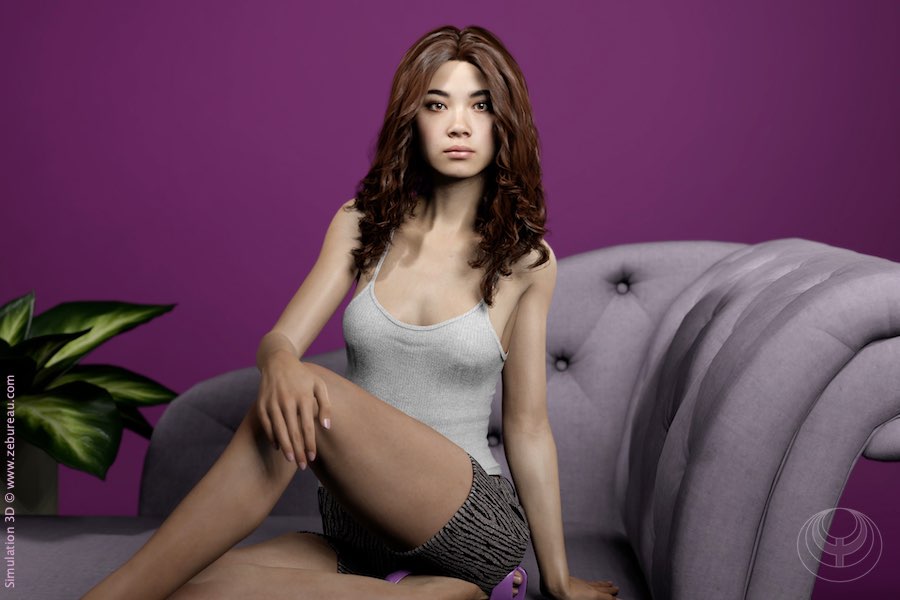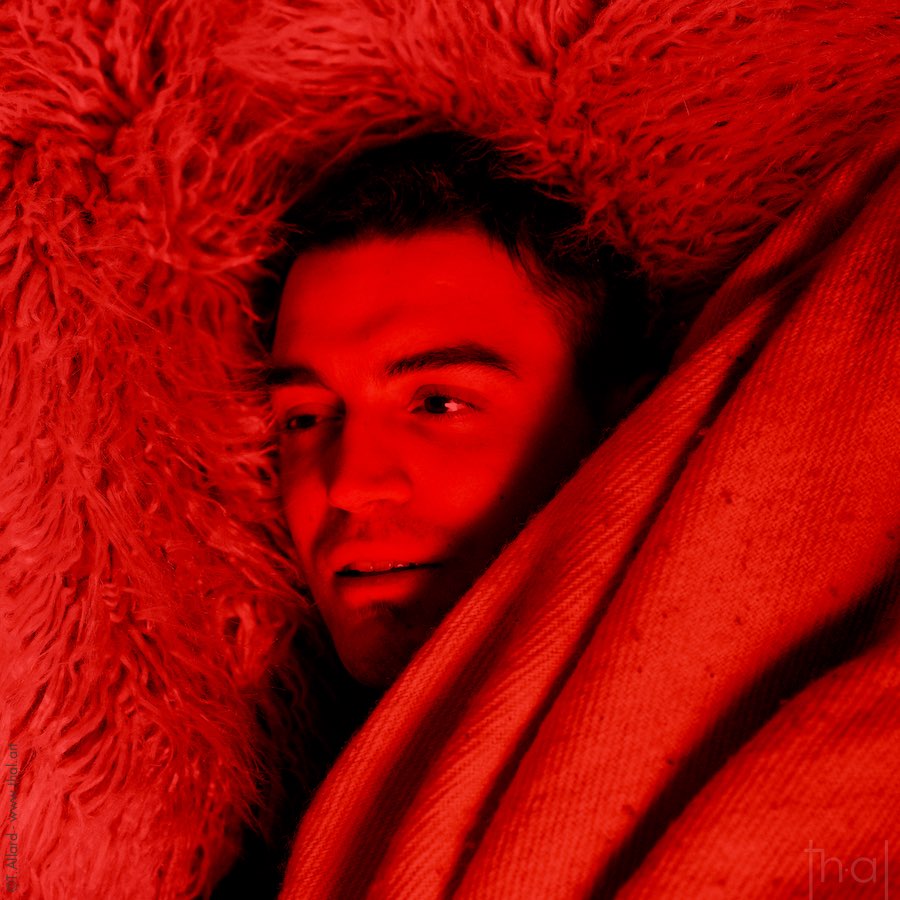
Since the invention of the vinyl record and its large cardboard album cover, the square artist portrait has become an exciting stylistic exercise for photographers.
For a portrait photo shoot for an album cover, it’s best to take the time to get it right, with a studio or outdoor session lasting one to two hours. This guarantees a wide variety of proposals, just like for a psychological portrait (Article coming soon).
Photo portraits to match the music
For this young French rapper and songwriter, Teïks, the studio photo shoot lasted 2 hours, with the aim of producing the visuals for 4/5 singles or EPs. The aim was to produce a series of portrait images of the artist that were natural enough to bring out his personality and match the lyrics and musical style of the tracks.
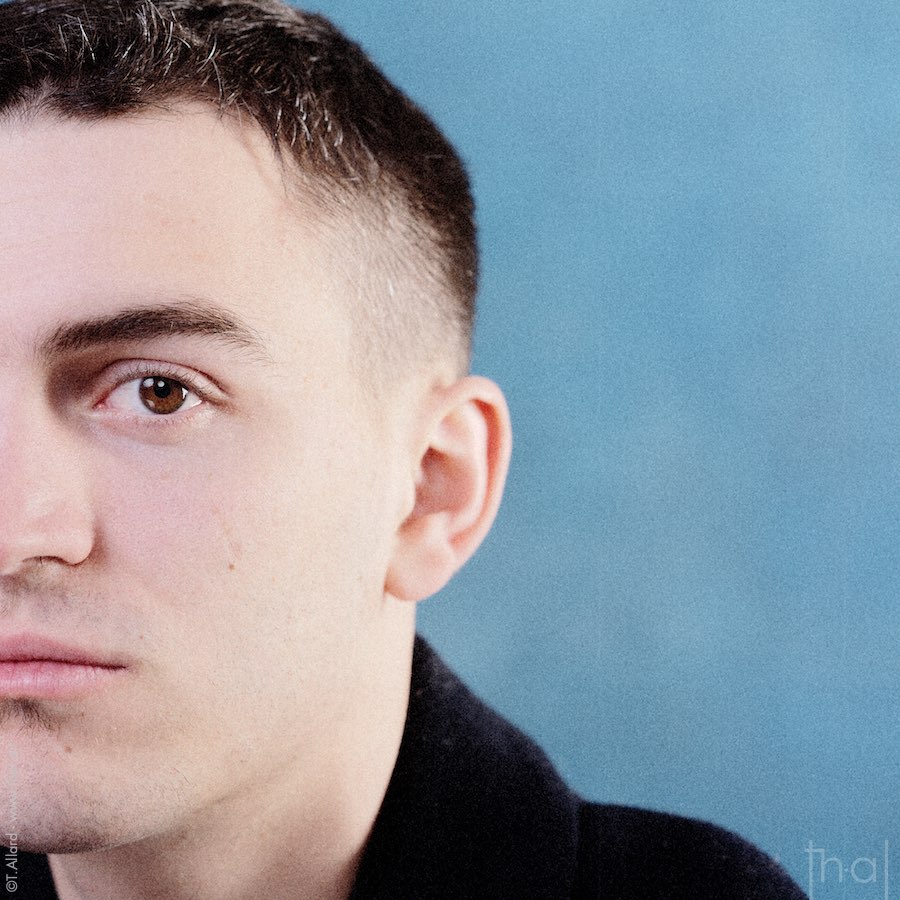
The musical portrait
Music always plays an important role in our portrait and fashion shoots, and our Lyon photo studio is fully equipped with sound.
To put our models at ease more quickly, we usually offer them a shoot set to music, with the option of sending their favorite Spotify or YouTube playlist to our sound system.
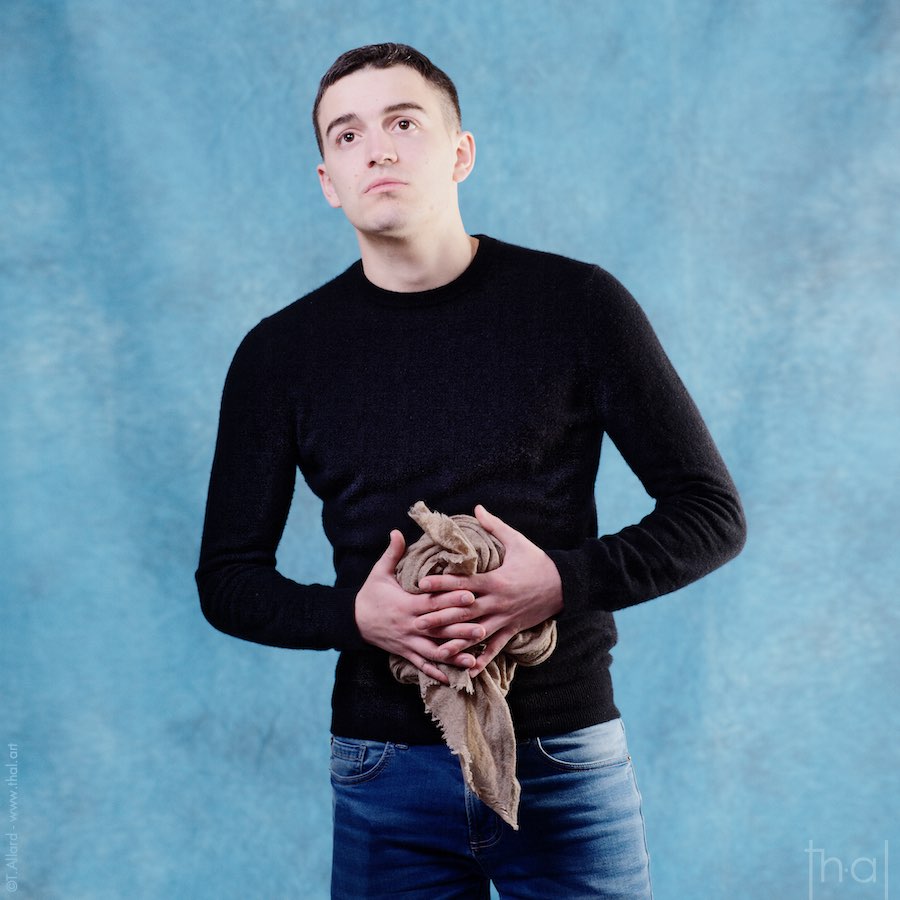
In a photo shoot for a record sleeve, music is also used to inspire the artist’s poses.
See also our article on a rock band portrait session (Coming soon).
The record sleeve photo squared
Vinyl records, followed by audio CDs, have definitively imposed the square format for the photos appearing on the covers (even if there are double vinyl albums or CD booklets whose images, cropped to the 2:1 format, extend over two sides).
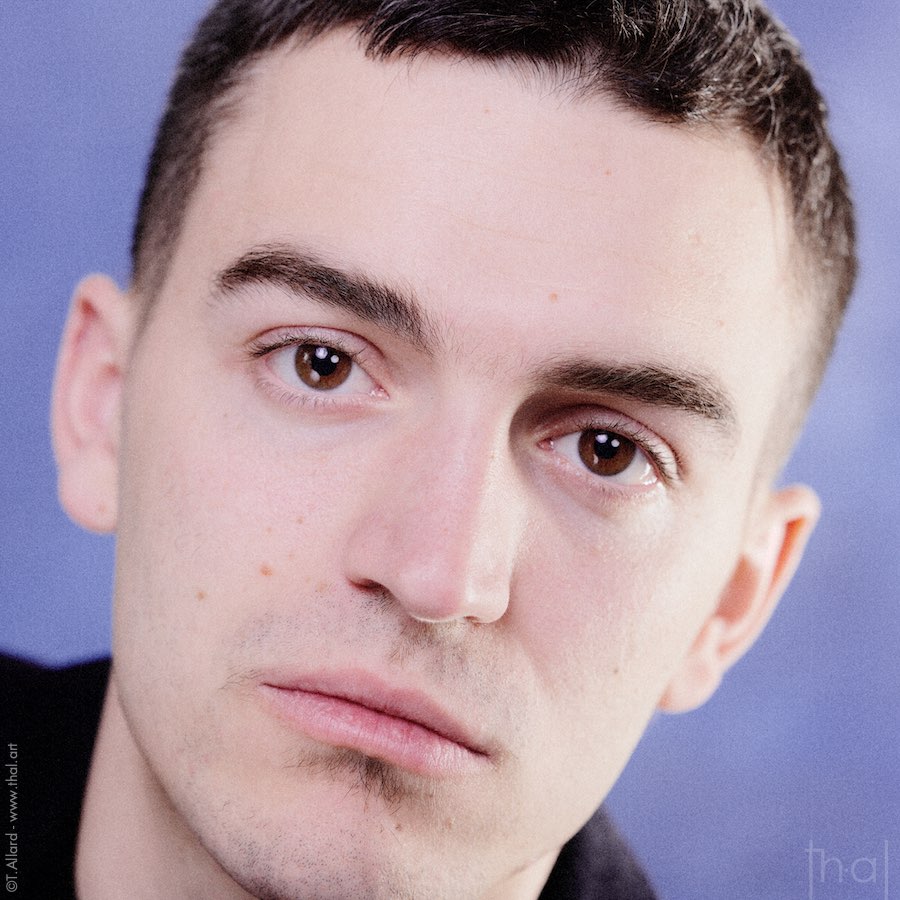
The 1:1 ratio is well-suited to producing the “close-up” portraits (a tight, face-centered framing) so common on album covers, or to offering left- or right-shifted portraits that leave more room for the title.
An improv studio photo session
Lighting on the move
This photo shoot for Teïks got off to a classic start, with the softboxes precisely positioned for the first portraits.
Then, as ideas came up and backgrounds changed, we let a few “accidents” of light happen (from the studio photographer’s point of view) to favor a form of authenticity in the images, as here.

The session ended at night, in the street, to take a few freehand photos under street lighting, just to add a few more suggestions in line with the young composer’s slam-rap style.
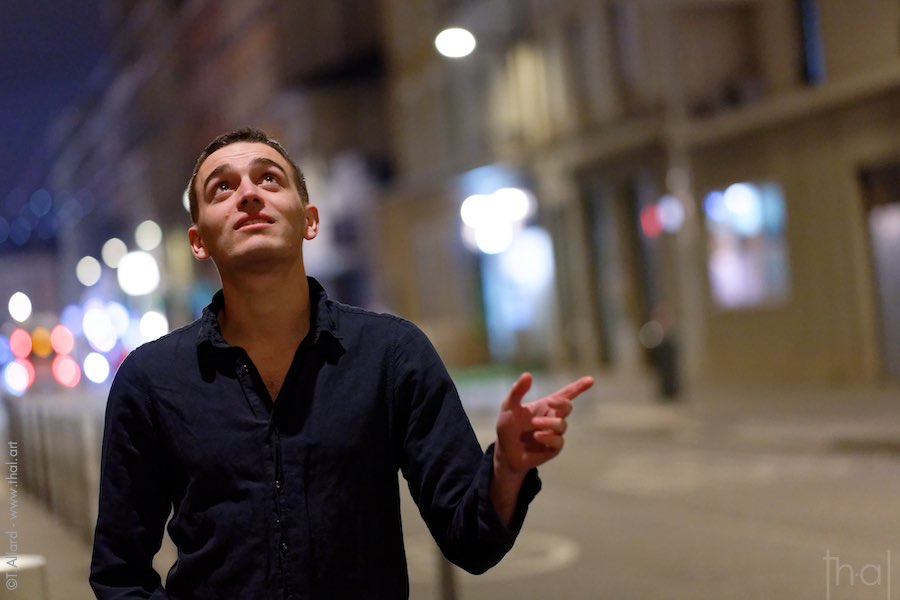
Choosing images to music
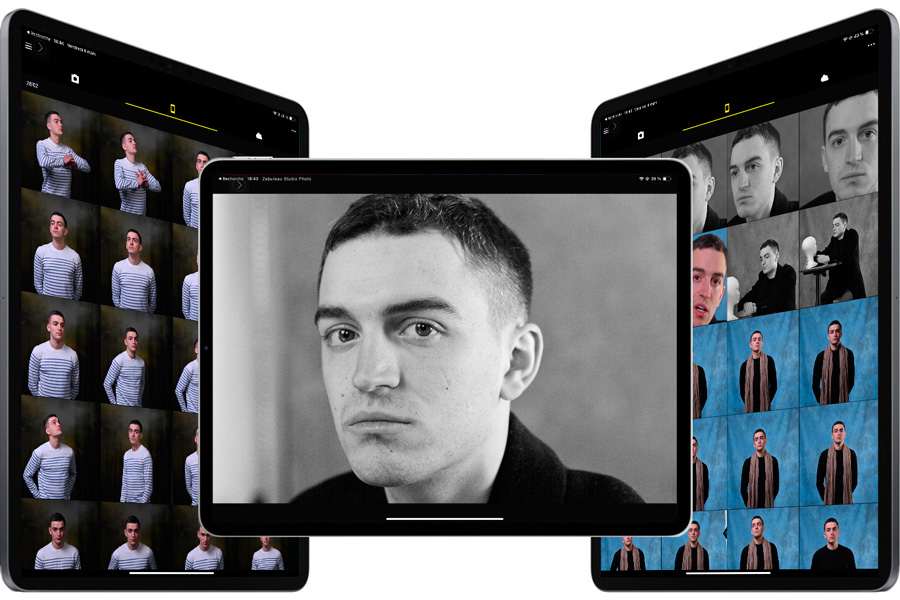
Inside our photo studio, as well as outside, the photos are sent directly, as they are taken, to a large graphic tablet that follows us everywhere.
After each mini-session, a pre-selection is made with the artist, sometimes playing the corresponding single at the same time to ensure that the image matches the meaning of the lyrics.
Processing cover images
Studio shots taken with digital cameras are by nature more controlled, and produce images that are sometimes too polished to illustrate introspective music.
Without requiring any real photo retouching, the images from this shoot were processed with a view to “degrading” them slightly.
Digital development
Addition of photo grain, colorization, lightening, desaturation, metallization, …
Post-production on the square images presented in this article was done “by feel”, as for the shooting session.
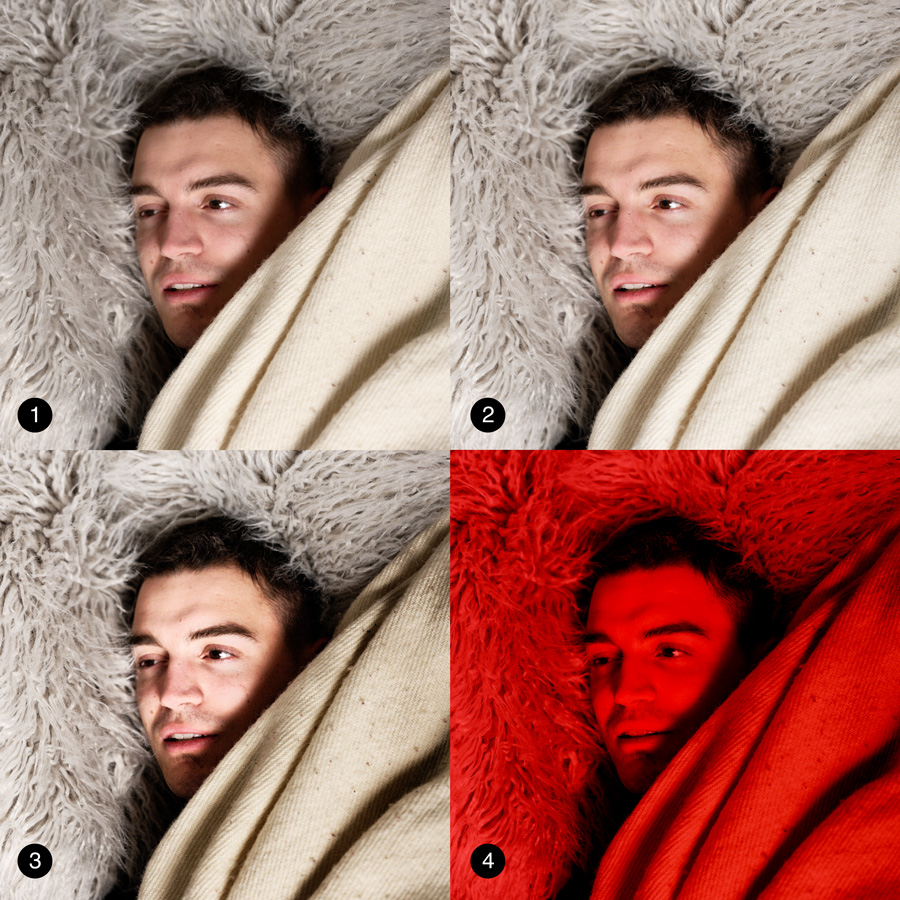
The cover image chosen as #1 for its composition was of good quality, although it was noticeable that the light-colored plaid had caught a little too much light.
Starting with a slight rebalancing of image no. 2, we then created a contrasting version no. 3 by adding grain, as if the image had been shot with an analog camera and high-sensitivity film.
This step was necessary to make a final proposal colored red.
Showcasing album covers on music platforms
In record stores, the vinyl sleeves on display can easily play a seductive role, arousing curiosity and making people want to discover an artist without even knowing his or her music.
On the portals of music streaming platforms, cover art has lost some of its appeal, as it has been reduced to thumbnail size and is often placed in second place, after the playlists proposed by the algorithms.
Fortunately, they are still displayed on the artist’s page, but it’s only when listening to a track that a larger version of the images will have a better chance of making a lasting impression on listeners.
Ideally, each cover image should be processed according to the background on which it is displayed.
But this would require different versions for different streaming platforms with different color charts: Spotify, Deezer, Tidal and Qobuz have black interfaces, while Apple Music, Youtube and Soundcloud have white ones (unless special settings are made).
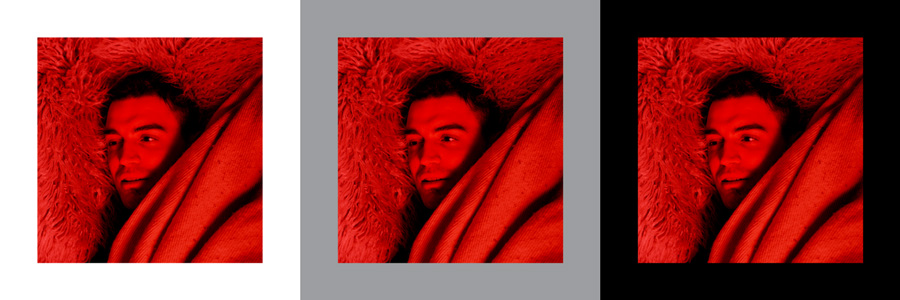
Tests of the red-colored record sleeve on white, gray and black backgrounds.
4 tips for publishing your Single, EP or Album images on music streaming platforms
- A square image of at least 3000×3000 pixels (4000 px for Apple Music).
- An RGB color file in JPG (without destructive compression) or PNG format.
- The file size must not exceed 10MB.
- If you add text to the visual, such as the artist’s name or album title, this must be identical to the metadata you entered for the disc. Please note: any other readable text on the cover that is not part of your track’s metadata may result in your release being blocked.
Files required for printing an image on a hardback record sleeve or for a CD booklet
- For a Maxi 45 or 33 rpm, an image of 4000×4000 pixels or more.
- For a 45 rpm, an image of 2200×2200 px or more.
- For a CD, an image of 1500×1500 px minimum.
- The image can be in CMYK or RGB, in TIFF, JPG or PDF format (non-destructive) with a resolution of 300 dpi.
Teïks’ electro slam-rap
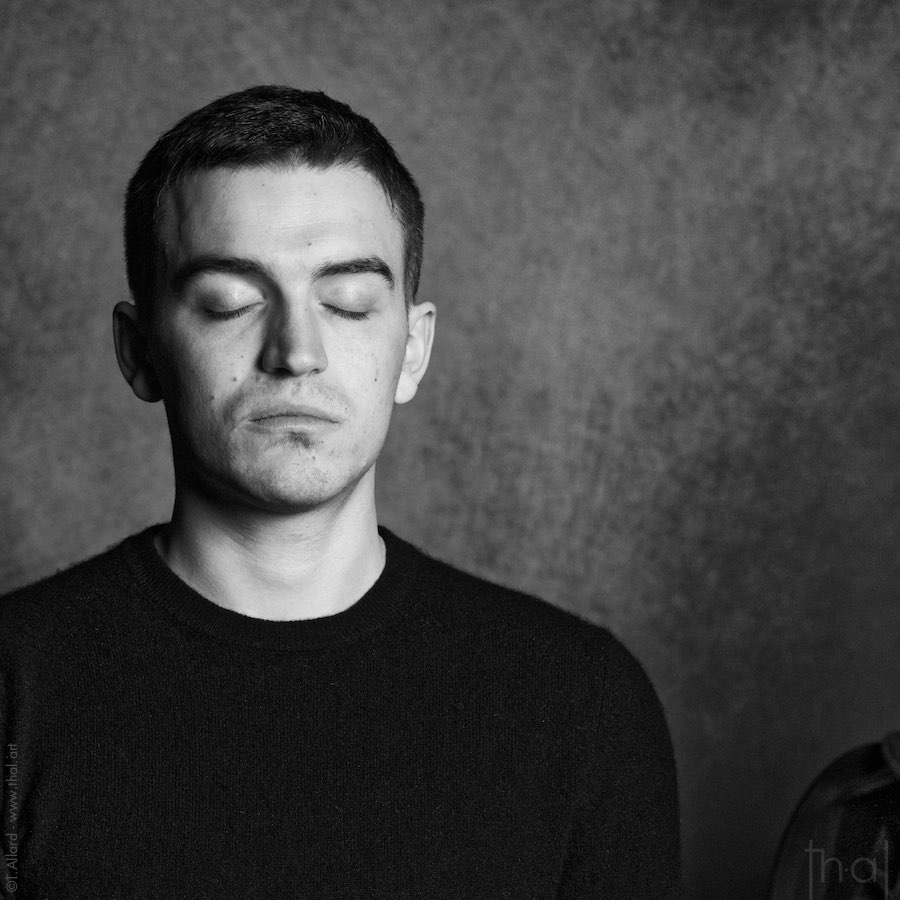
Teïks is a rapper-songwriter from Nice who alternates between pop sounds and introspective rhymes, using vocals as well as slam and rap.
Unlike other rappers, his writing is characterized by an absence of “ego trip”, focusing instead on three themes: introspection, relationships and nature.
The OFF of the musician photo shoot
We’ve got into the bad habit 😉 on this blog, since a previous rocker shoot, of publishing a few unused or amusing images, often taken between poses.
The musician’s new haircut, done with the help of two long-haired cushions, reminds us of a wig photo shoot we did (article coming soon).
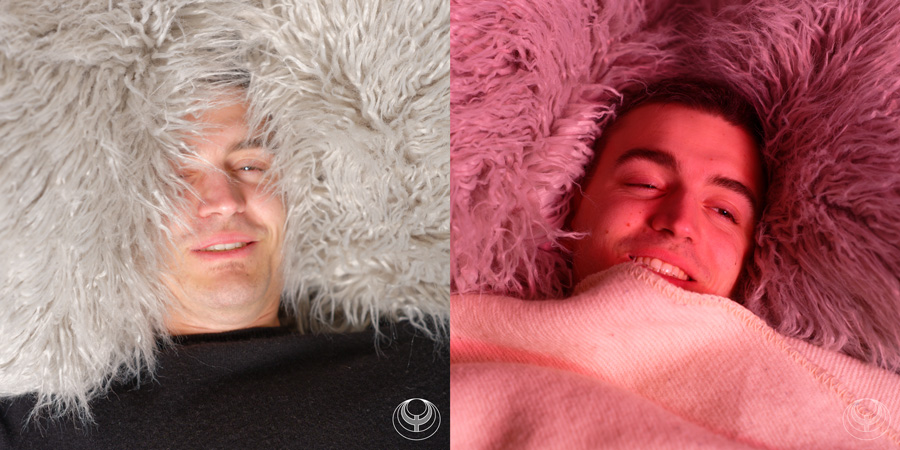
As shooting directly with red gelatin turned pink, it was decided to colorize an image in red in post-production.
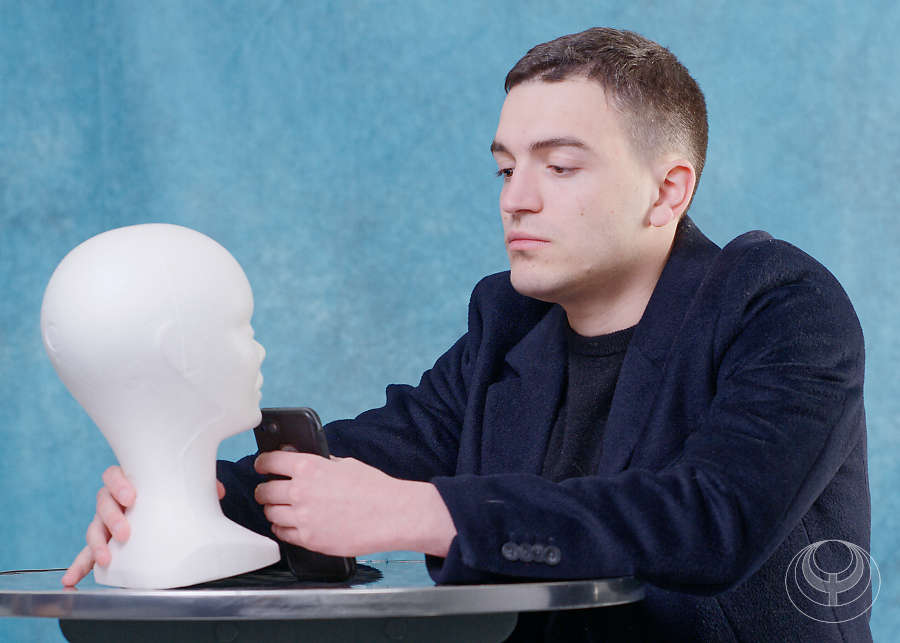
The “To be or not to be” session in a photo studio is not played out with a skull and crossbones!
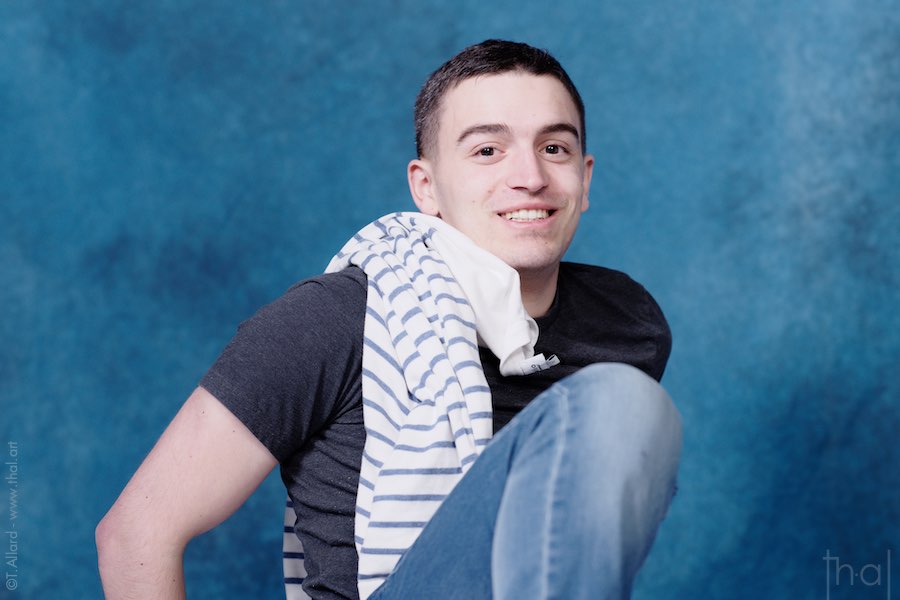
A natural smile, caught between two poses, is not suitable to illustrate introspective pieces of music.


